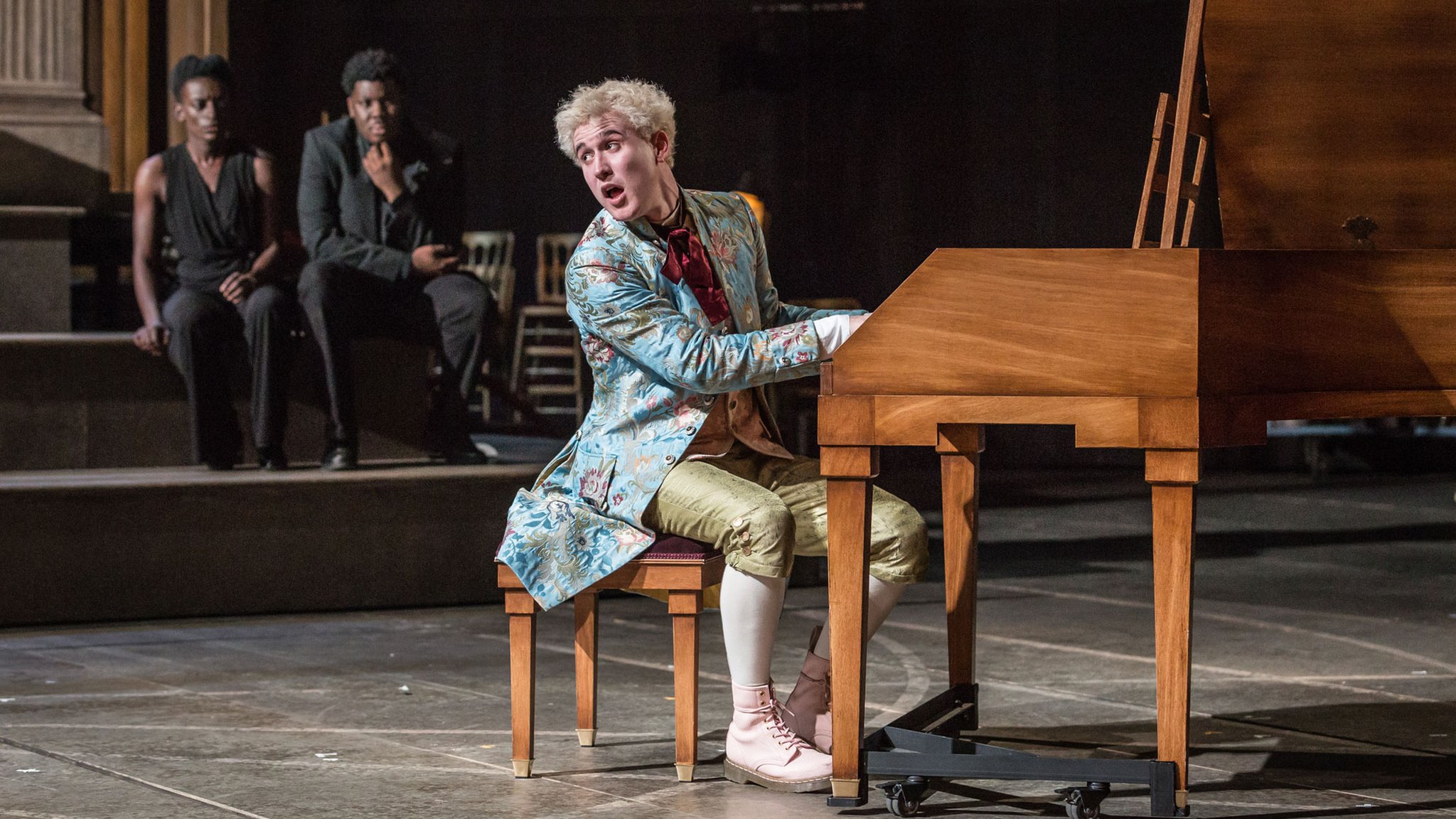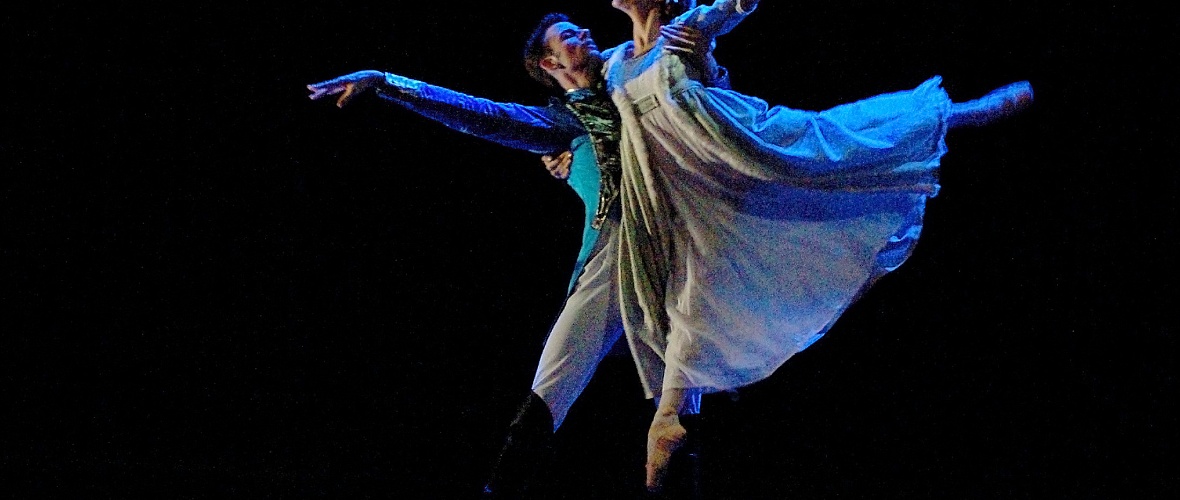Amadeus
Description
Peter Shaffer (1926–2016), a multi-award-winning English playwright, screenwriter and novelist, proved himself a master of psychologically convincing characterisation, outstanding dialogue and brilliant dramatic situations in his best-known play Amadeus, in which he summarised historical circumstances and drew precise psychological profiles of the protagonists. The drama is written in the style of retrospective dramaturgy and as such allows for far-reaching epic direction and many opportunities for outstanding acting creations. Amadeus premiered in 1979 and the drama gained worldwide fame thanks to Forman’s 1984 film of the same name. Amadeus is based on a fictionalised story or modern myth about the lives and mutual rivalry of composers Wolfgang Amadeus Mozart (1756–1791) and Antonio Salieri (1750–1825). For his story, Shaffer was inspired by Alexander Pushkin’s short play Mozart and Salieri fr om 1830, which the composer Nikolai Rimsky Korsakov used as the libretto for an opera of the same name in 1897. The documented historical facts, of course, show a different kind of relationship between the two composers, but the story, or rather the rumours about the “suspicious” circumstances of Mozart’s death (he was allegedly poisoned) and above all about Mozart’s divine musical talent, became a myth in the Romantic era that revered the concept of artistic genius (today we would call it a conspiracy theory) and consequently proved to be ideal material for Shaffer’s dramatic adaptation.
After twenty-three years, Amadeus was brought to the stage by the Drama director of the Maribor Theatre, who said the following in an interview with the dramaturg Maja Borin: “I have the impression that we are living in a time of destruction and that destruction has become an omnipresent tool of humanity. I chose Amadeus because it is a story about a creator and his ingenious musical creations. And because I believe that art at all times shows new and new possibilities of creation and thus also teaches others to think and create creatively. Artists have always been and will continue to be creators of new worlds, approaches, ideas and insights – they go wh ere the pragmatic mind cannot follow.”
In the article Mozart and Salieri – between mysterious collegiality and potentised rivalry: an attempt to demystify a certain relationship, musicologist Benjamin Virc recalls, among other things, an interesting shift in the musical tastes of the masses that took place in the mid-1980s and can be described as Mozartmania. While until the 1980s the place of the world’s greatest composer was taken by Beethoven, after the “bicentenary of Mozart’s death, urban legends about the composer’s mysterious death began to revive, peppered through and through with detective fantasy and all too many conspiracy theories.” All this led to a number of new artistic representations in literature, theatre and film, most notably in the highly acclaimed Shaffer-Forman’s Amadeus. Salieri’s biggest problem was probably that he was a contemporary of Mozart and “was able to follow the development of the phenomenon that Mozart was to become with his own eyes, although Mozart himself also created works that can be described without exaggeration as cultural commodity that serves entertainment and pleasure. Because of the duty we owe to historical truth, it is therefore all the more important that, in rediscovering the works of Mozart and Salieri, we immerse ourselves more deeply in the music and become at least temporarily blind to the glittering and certainly at least partly inauthentic mythological embellishments that can obscure what is supposed to have ‘authentic value’. But perhaps we will be deeply surprised or even shocked to realise how similar Mozart and his eternal ‘second’ Salieri really were in artistic terms.”
Source: https://www.sng-mb.si/event/amadeus/?lang=en
After twenty-three years, Amadeus was brought to the stage by the Drama director of the Maribor Theatre, who said the following in an interview with the dramaturg Maja Borin: “I have the impression that we are living in a time of destruction and that destruction has become an omnipresent tool of humanity. I chose Amadeus because it is a story about a creator and his ingenious musical creations. And because I believe that art at all times shows new and new possibilities of creation and thus also teaches others to think and create creatively. Artists have always been and will continue to be creators of new worlds, approaches, ideas and insights – they go wh ere the pragmatic mind cannot follow.”
In the article Mozart and Salieri – between mysterious collegiality and potentised rivalry: an attempt to demystify a certain relationship, musicologist Benjamin Virc recalls, among other things, an interesting shift in the musical tastes of the masses that took place in the mid-1980s and can be described as Mozartmania. While until the 1980s the place of the world’s greatest composer was taken by Beethoven, after the “bicentenary of Mozart’s death, urban legends about the composer’s mysterious death began to revive, peppered through and through with detective fantasy and all too many conspiracy theories.” All this led to a number of new artistic representations in literature, theatre and film, most notably in the highly acclaimed Shaffer-Forman’s Amadeus. Salieri’s biggest problem was probably that he was a contemporary of Mozart and “was able to follow the development of the phenomenon that Mozart was to become with his own eyes, although Mozart himself also created works that can be described without exaggeration as cultural commodity that serves entertainment and pleasure. Because of the duty we owe to historical truth, it is therefore all the more important that, in rediscovering the works of Mozart and Salieri, we immerse ourselves more deeply in the music and become at least temporarily blind to the glittering and certainly at least partly inauthentic mythological embellishments that can obscure what is supposed to have ‘authentic value’. But perhaps we will be deeply surprised or even shocked to realise how similar Mozart and his eternal ‘second’ Salieri really were in artistic terms.”
Source: https://www.sng-mb.si/event/amadeus/?lang=en
Genres
Culture,
Theatrical Performances
Theatrical Performances



